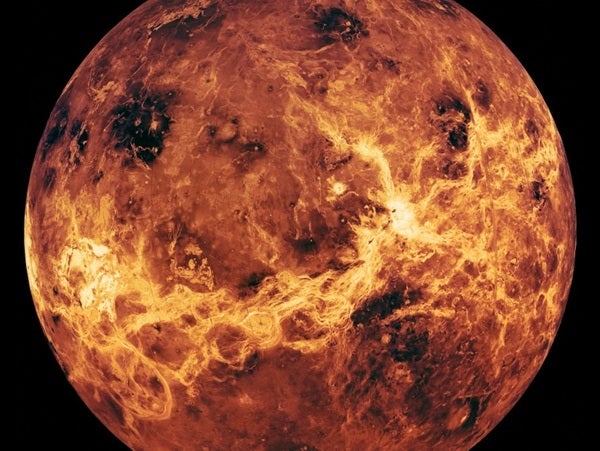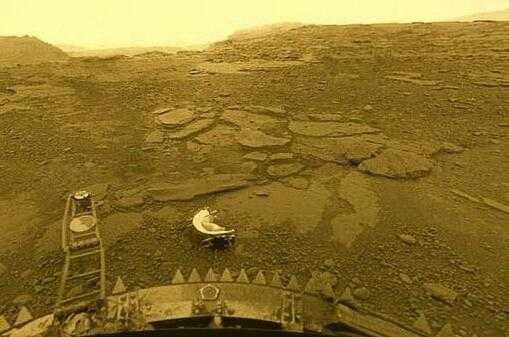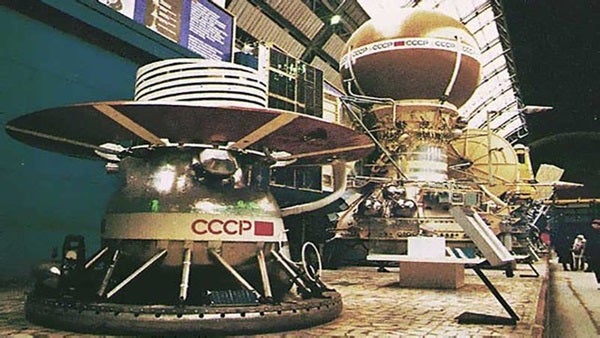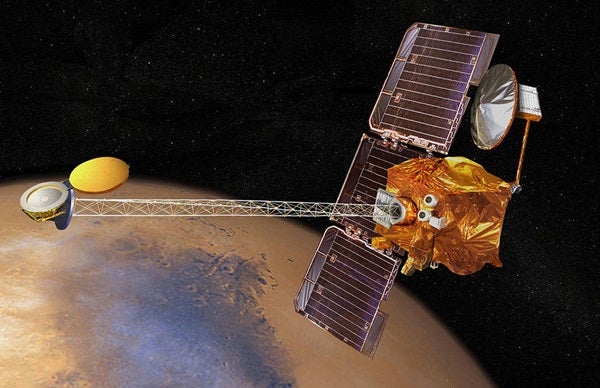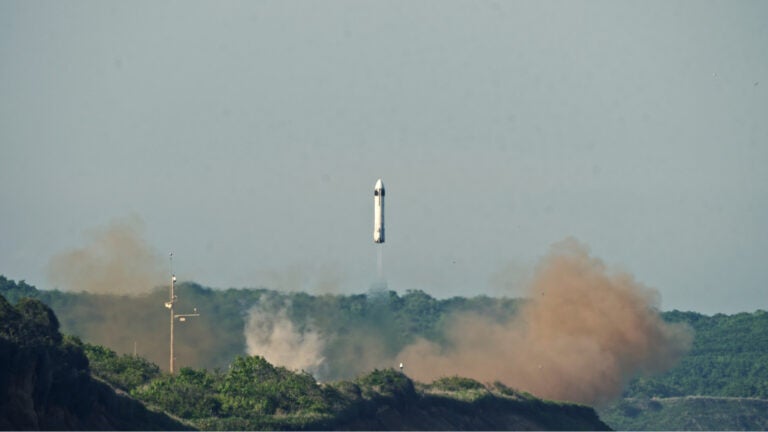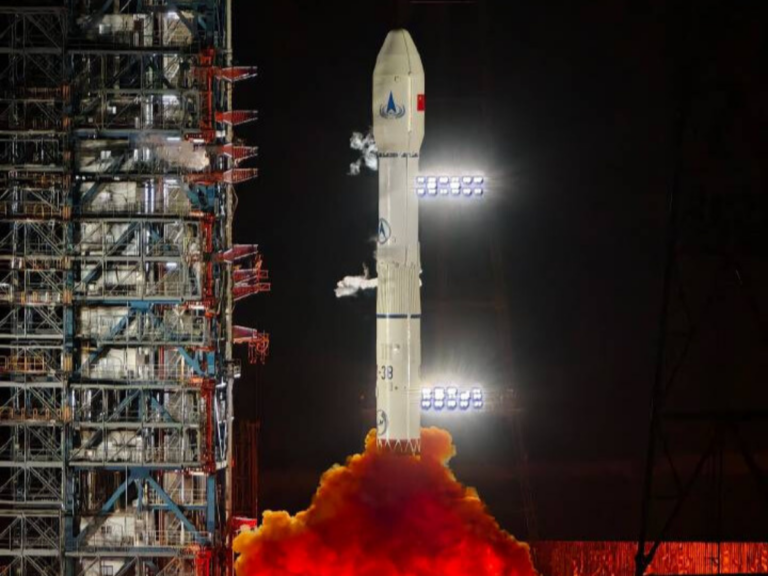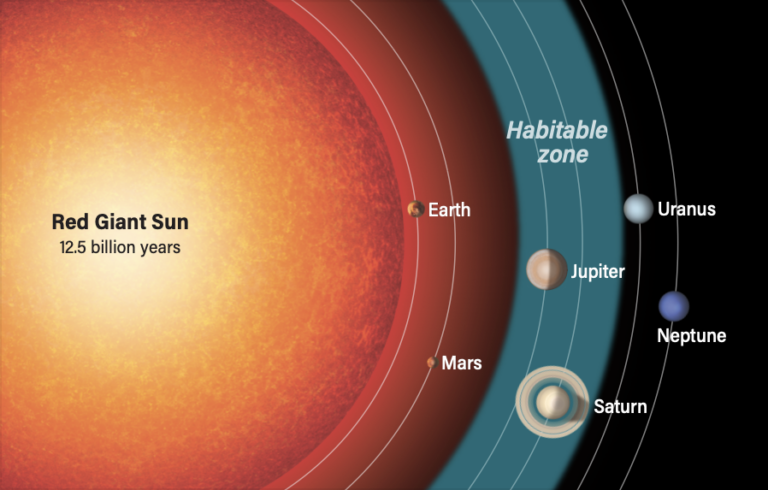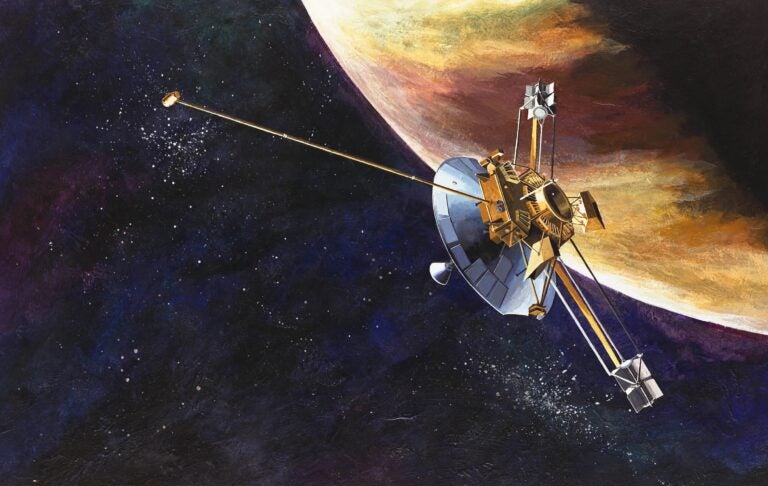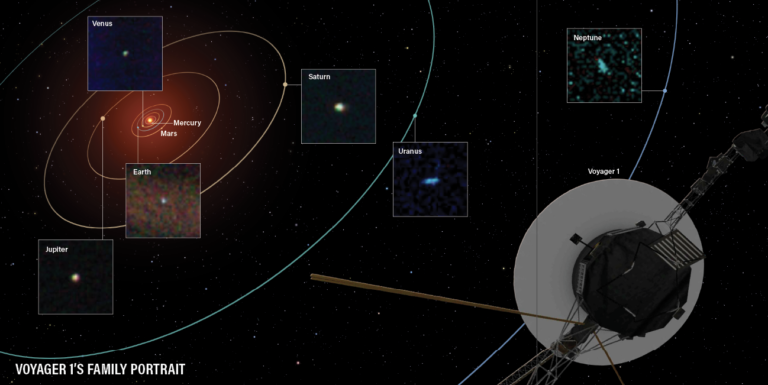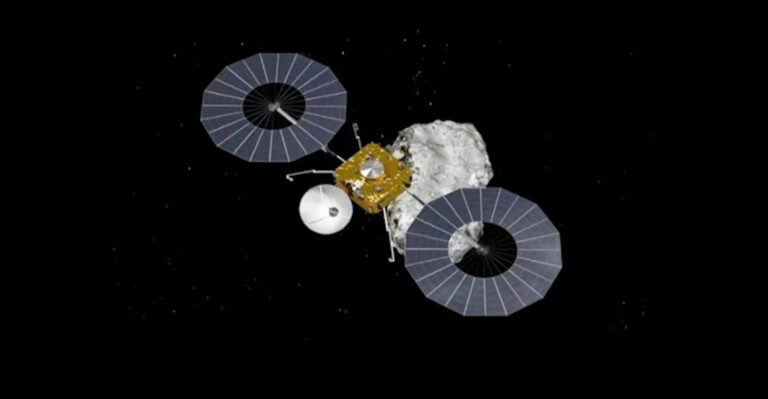Editor’s note: This story was originally published Aug. 26, 2020. It was updated May 9, 2025, with details of the failed mission Kosmos-482.
The Pioneer and Voyager probes the United States sent to explore the outer planets in the 1970s are often, and accurately, lauded as historic interplanetary achievements. That’s partly because, equipped with the Pioneer Plaque and the Voyager Golden Record, these objects are ostensibly meant to be found by aliens someday, helping them easily burrow into public consciousness. Similarly, robotic explorers to Mars, including the Viking landers and the Sojourner, Spirit, Opportunity, and Curiosity rovers, take innumerable headlines, and they’re often even given anthropomorphized personalities.
Almost forgotten, however, are the ambitious Soviet exploration missions of Venus. Beginning at the dawn of the Space Age in the late 1950s, the Soviets worked to design and construct a series of Venus probes. And for almost 30 years, they built and flew the interplanetary spacecraft as part of the Venera program — carrying out rather impressive feats, even by today’s standards.
Venera program: The Soviets set their sights on Venus
In the early 1960s, the Cold War was in full swing and the Space Race was on. The Soviets were eager to notch as many “firsts” as they could in all realms of spaceflight. At that time, they had a better heavy-lifting capability than the United States. This allowed them to build and launch larger spacecraft, both crewed and uncrewed. And by using four-stage rockets and an advanced telemetry system, the Soviets could also mount missions to the difficult-to-reach inner planets.
Venera 1, the first probe in the series of Soviet Venus missions, weighed in at an impressive 1,400 pounds (at just 184 pounds, the first satellite, Sputnik 1, was a mere featherweight in comparison). Somewhat resembling a Dalek from Doctor Who, the Venera 1 probe was spin stabilized and packed with instruments, including a magnetometer, Geiger counters, and micrometeorite detectors. And like many of its successors, the interior of the probe was pressurized to just over one atmosphere with nitrogen gas to help the instruments function at a stable temperature.
However, the first Venera 1 probe never made it out of Earth orbit. And the second attempt, launched February 12, 1961, failed en route to Venus, though it did pass within about 62,000 miles (100,000 kilometers) of the planet.
Venera 2, which greatly resembled Venera 1, was built to fly past Venus, during which it would record information and transmit it back to Earth. And the probe did complete its flyby on February 27, 1966, coming within about 15,000 miles (24,000 km), but it also overheated and was never heard from again. It’s still unclear whether Venera 2 failed before or after it zipped by the distant world.
The Soviets designed the next four probes, Venera 3 through 6, to more closely study the atmosphere of our hellish neighbor. Generally weighing about 2,000 pounds (900 kilograms) each, these probes contained a suite of instruments and a detachable pod (known as a descent module) equipped with a second collection of devices that included a barometer, a radar altimeter, gas analyzers, and thermometers. Not all of these probes ended in success, though.
Venera 3 planned to land on the venusian surface, but it instead slammed into it on March 1, 1966 — officially making it the first spacecraft to crash into another planet.
Venera 4, however, spent more than 90 minutes taking measurements as it slowly floated down through the dense atmosphere of Venus on October 18, 1967. It also detected very elevated levels of carbon dioxide in the air, as well as a lack of a global magnetic field. And as expected, it eventually succumbed to the planet’s intense heat and pressure.
Both Venera 5 and Venera 6 were likewise successes, transmitting back data for more than 50 minutes as they parachuted through the atmosphere of Venus on May 16 and May 17, 1969. By helping scientists further characterize the atmospheric composition of world, these probes made it clear that Venus is highly unlikely to host life; romantic hopes of Venus as an earthly paradise were dashed.
Venera 7 included an even more ambitious descent module designed to make a soft landing on Venus, which included heavy fortifications so it could briefly survive the inhospitable conditions on the surface. Launched August 17, 1970, the flight was a success of sorts. The lander made it to the surface on December 15, 1970, but it got there after its parachute ripped, causing it to fall faster than planned for nearly 30 minutes before smacking into the surface at about 38 miles per hour (61 km/h).
Initially thought to have failed, Venera 7 did manage to transmit meaningful data for a short period of time. For example, the lander measured a surface temperature of almost 900 degrees Fahrenheit (475 Celsius), or about as hot as a brick pizza oven. Although the probe’s pressure sensor failed during descent, researchers were able to use its measurements to estimate a surface pressure of about 92 bars, which is about what you would experience if you were more than a half mile (900 meters) underwater.
Venera 8 repeated much of the Venera 7 mission, albeit without its lander falling over when it reached the surface of Venus on July 22, 1972. Venera 8’s functioning pressure sensor confirmed Venus’ oppressive atmosphere, but it also took measurements of ambient light levels on the surface, confirming that future cameras should be able to capture the venusian sights.
The surface of Venus comes into focus
Of all the Soviet missions to Venus, Venera 9 through Venera 12, weighing roughly 11,000 pounds (5,000 kg) each, are the best remembered to this day. That’s mainly because their landers carried cameras that could directly image the surface.
Venturing to Venus between 1975 and 1978, several of the cameras on these probes failed, usually due to their lens caps not coming off. But nonetheless, a few managed to take and transmit the very first images from the surface of our solar system’s second planet.
The early snapshots obtained by Venera 9 and Venera 10 are haunting. Crisp, clear, and spherically distorted by their wide-angle lenses, they depict a harsh and rocky alien landscape extending out to the horizon. But the images also managed to capture the edges of the landers themselves, which reveals their distinctly Soviet design.
Venera 13 and Venera 14, both launched in 1981, were more advanced versions of the Venera 9 through 12 probes, carrying landers equipped with sophisticated acoustic devices that could tune in to the Venusian wind to gauge its speed.
Venera 15 and Venera 16, each weighing just under 9,000 pounds (4,100 kg), did not carry landers. In their place they brought highly advanced radar-based imaging systems that could map the blistering world from elliptical orbits. The Pioneer 12 probe may have been first to map Venus using radar, but Venera 15 and 16 did it better, reaching a resolution of about a mile (1 to 2 km) per pixel. The images returned by these probes were fantastically detailed, revealing broad swaths of the harsh landscape, complete with impact craters, dramatic rises, and lava-flooded basins.
The Venera program was ambitious and groundbreaking, but unfortunately, not every mission was a success. The Soviets maintained a shroud of secrecy around failed missions, excluding them from the official Venera program. Instead, these missions were given generic names — “Kosmos” followed by a number. One such spacecraft is Kosmos-482, which was launched just four days after Venera 8. But its rocket malfunctioned and the craft never reached Venus, instead getting stuck in a highly elliptical Earth orbit. It separated into multiple pieces, most of which fell back to Earth shortly after launch and in the 1980s. The last of these parts is the lander itself, which recently declassified documents show was deliberately jettisoned from the main spacecraft after it was clear it would not leave Earth orbit. It is predicted to reenter Earth’s atmosphere on May 9 or 10, 2025 — give or take a day — more than 50 years after its launch.
The U.S. made its mark on the exploration of Venus through missions like Pioneer 12 and the wildly successful Magellan, and other craft sent by the European and Japanese Space Agencies also contributed to our understanding of our planetary neighbor next door. Still, the Soviet Venera program remains the most intense and sustained series of missions to Venus yet.
And at least for now, that doesn’t look like it’s going to change soon.


